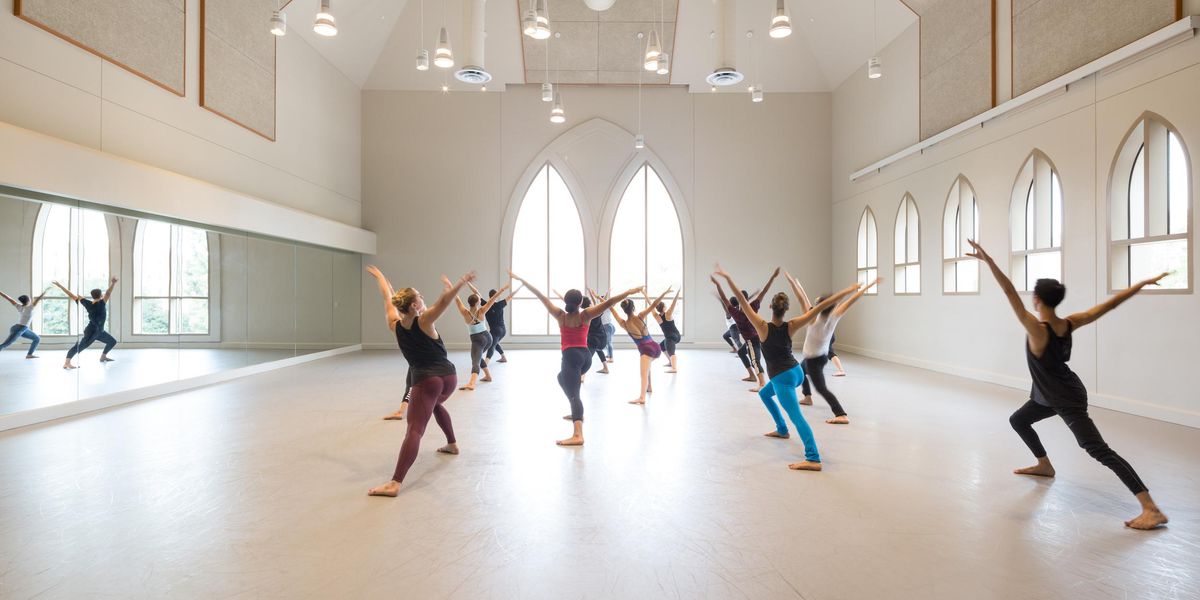12 Audacious Quotes from Martha Graham
Graham during her first NYC concert, April 18, 1926.
On April 18, exactly 90 years after Martha Graham’s first performance as a choreographer, the New York Public Library’s Dance Division hosted a festive reading of her 1991 autobiography, Blood Memory. A kind of coda to the Graham season at New York City Center, the seven-hour marathon included 16 luminaries including Carmen de Lavallade, Michelle Dorrance, Deborah Jowitt, Wendy Whelan, Sonya Tayeh, Virginia Johnson and Tiler Peck. We (I was honored to be part of this group) each read 15 or 20 pages of her candid, sometimes outrageous memoir. We were reminded of the torrent of nature that was Martha Graham: profound, transgressive, lofty, uncompromising and bitingly funny.
- Movement never lies. It is a barometer telling the state of the soul’s weather to all who can read it. This might be called the law of the dancer’s life. [p. 4]
- Every dance is a kind of fever chart, a graph of the heart. Desire is a lovely thing, and that is where the dance comes from, from desire. [p. 6]
- Louis Horst did not want me to use strings…He preferred piano, percussion, and wind instruments. He did not want strings in any of the music because he felt they were too lush and too romantic—in other words, deadly to contemporary dance. [p. 75]
- I was savage at that time [the 1920s]… I was almost like an animal in my movements. I wanted to be a wild, beautiful creature, maybe of another world—but very, very wild. [p. 79]
- [At the Chicago Art Institute] I saw across the room a beautiful painting, what was then called abstract art, a startling new idea. I nearly fainted because at that moment I know I was not mad, that others saw the world, saw art, the way I did. It was by Wassily Kandinsky, and had a streak of red going from one end to the others. I said, “I will do that someday. I will make a dance like that.” [p. 98]
- Dance followed modern painters and architects in discarding decorative essentials and fancy trimmings. Dance was not to be “pretty” but much more real. [p. 99]
- I would watch this lion [at the Central Park zoo] for hours as he’d take those great padding steps four times back and across the cage. Finally, I learned to walk that way. I learned from the lion the inevitability of return, the shifting of one’s body. The shift of the weight is one key aspect of that technique, that manner of movement. [p. 103-4]
- About the first concert, at the 48th Street Theatre, April 18. 1926: There was an audience. They came because I was such a curiosity—a woman who could do her own work. [p. 110]
- I’ve never really warmed to the idea of female impersonators, but then I sort of have to agree with Mae West, who said, “What’s wrong with it? Women have been doing it for years.” [p. 127]
- [In advance of her company’s State Department tour of Japan, Indonesia, India, Pakistan, Iran and Israel in 1954.] Before we left, people kept saying to me… “Will you be upset if the audience does not understand?” I said, “I’m not interested whether they understand or not. I am only interested if they feel it.” [p. 201-2]
- I know my dances and technique are considered deeply sexual, but I pride myself in placing onstage what most people hide in their deepest thoughts…It bemuses that my school in New York has been called “the House of the Pelvic Truth,” because so much of the movement comes from a pelvic thrust. [p. 211]
- I don’t think in art there is ever a precedent; each moment is a new one and terrifying and threatening and bursting with hope. [p. 260]
The event was organized by Oliver Tobin, a former dancer with the Martha Graham Dance Company. The photograph is by Nickolas Muray, International Museum of Photography at George Eastman House.




